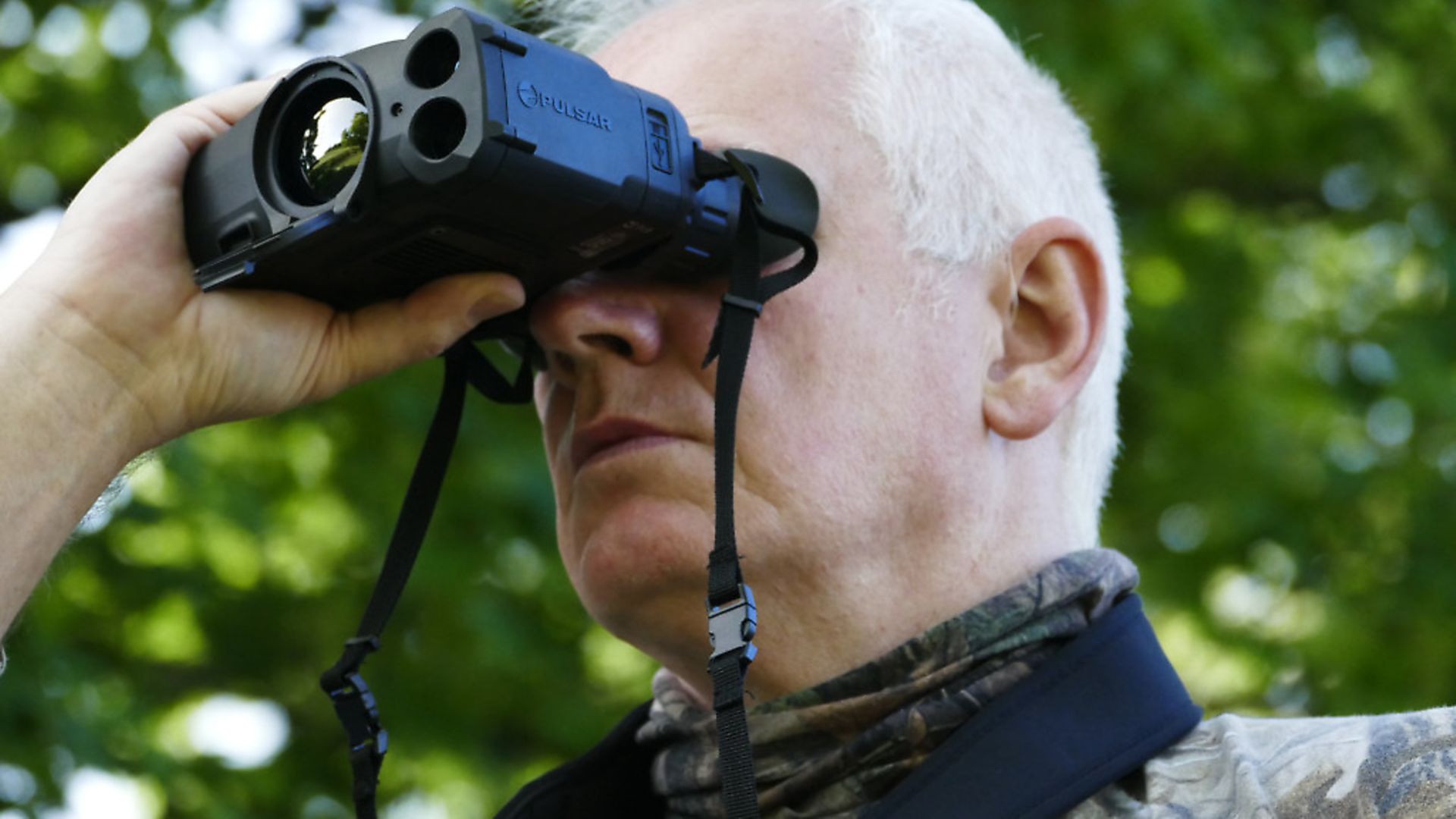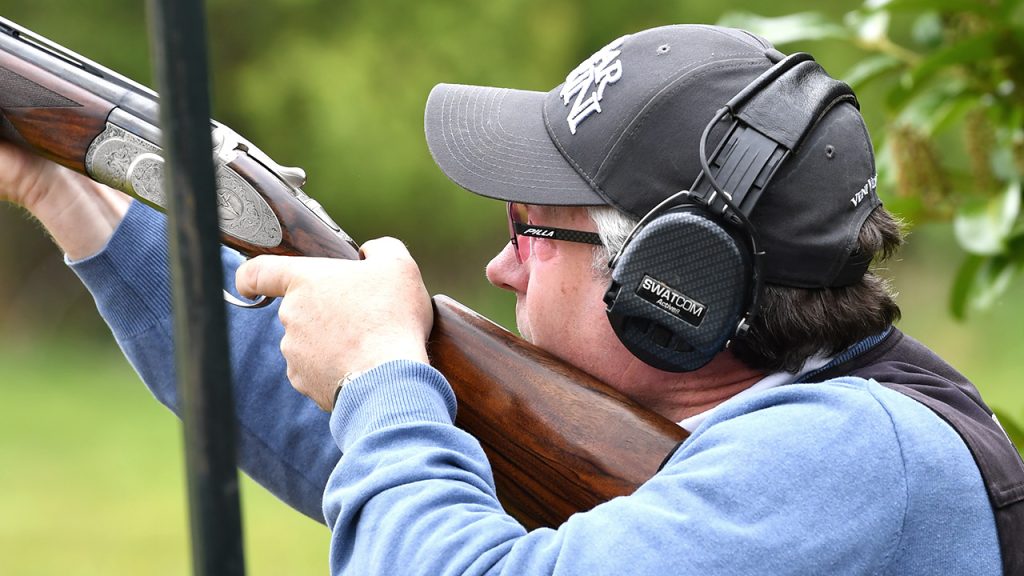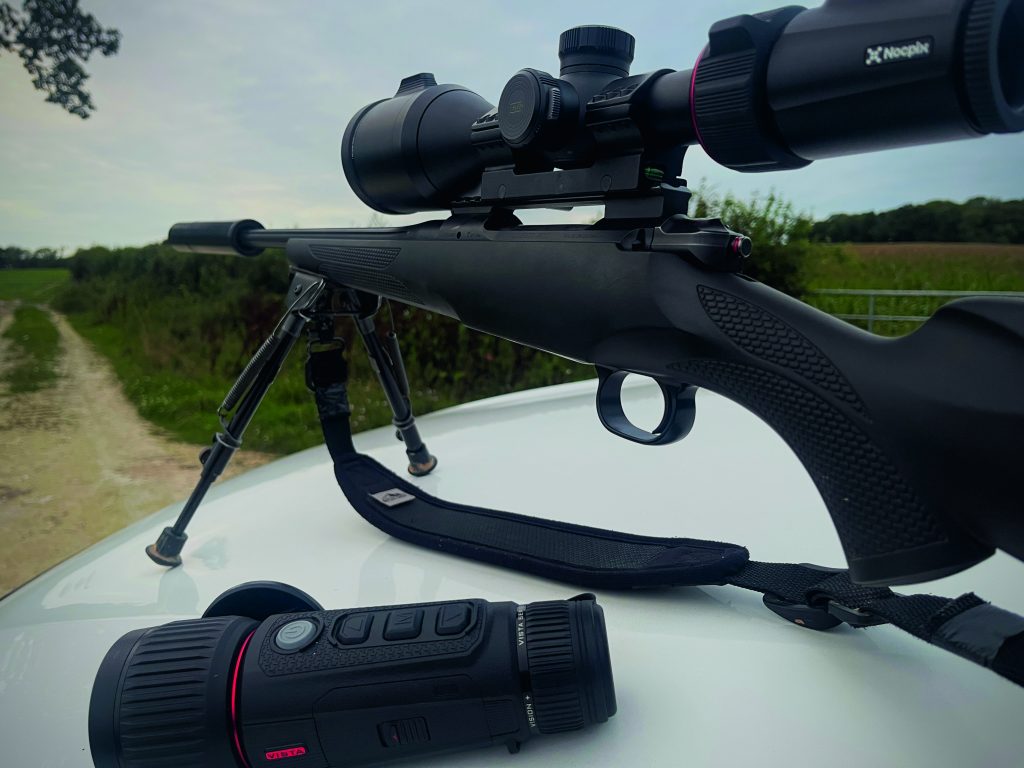Pulsar Accolade LRF XP50 2 and Helion XP50 2 – TEST & REVIEW
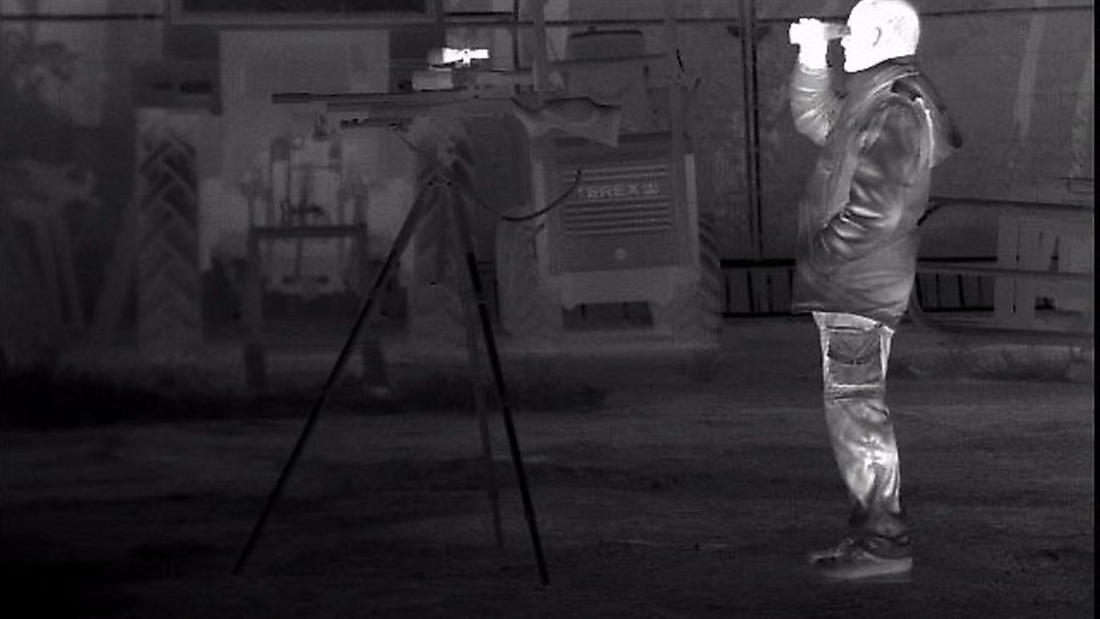
Paul Austin takes at the look at the latest high-end tech from Pulsar – the Accolade LRF XP50 2 and the Helion XP50 2 – as the competition heats up in the thermal market
Pulsar have pretty much had the high-end thermal market all to themselves over recent years, with the Helion range of thermal spotters being supplemented by the Accolade bino-style spotters, both with and without laser rangefinding (LRF).
The quality has been high, and the prices, some might say, even higher, but Pulsar are facing some serious competition from iRay and have clearly decided to come out swinging with roughly a £500 price drop on their latest flagship products, the Accolade LRF 2 XP50 and Helion XP50 2. Both are also enjoying an all-new sensor upgrade in an attempt to consolidate their position in the market.
The Helion XP50 and Accolade XP50 with their 640×480 sensors have been, and continue to be, the gold standard in high-end thermal. The sensor size remains the same, but the technology behind them has been enhanced with a NETD <40mK design.
What’s new in V2
So, what does a NETD <40mK equate to in the real world? Essentially, a <40mK sensor slices the thermal spectrum into finer increments. On screen, this basically translates into better thermal clarity, which in turn adds more depth to the image and higher thermal sensitivity to subtle changes in temperature.
To be perfectly honest, on a good thermal day, the difference between old and new is subtle. The version two upgrade is not a quantum leap in overall performance across the board. It’s akin to the difference between a really good set of binos compared to a truly great pair.
So, if you already have an XP50 thermal, don’t despair, you don’t need to list it on eBay just yet and start saving for their latest V2 incarnation. On a good thermal day, you’d probably be hard-pressed to spot the difference without having them side by side. It’s on a bad day that the <40mK upgrade comes into its own.
That’s not to say there hasn’t been some improvements in day-to-day usage. During testing, I was scanning around a local permission and spotted an undefined blob at the base of a large tree. Given the way it moved and mooched about, it was most likely a rat. The real surprise came when I ranged the tree at 237m; it was an easy spot – that’s an impressive detection range on a rat and not something I’m convinced the original XP 640×480 sensor could emulate.
I had a similar situation with a pigeon about 130m out. Not a difficult spot for any thermal on the ground, or perhaps with dense foliage behind it, but this bird was skylined on a clear cloudless day and sat gently bobbing up and down on the limb of a tree. As any thermal user will tell you, spotting skylined critters in trees is a challenge.
More often than not, the slight thermal difference between the bird and the tree, compared to that of the icy cold of deep space, means that most thermals simply blend bird and branch together as it attempts to cope with the huge range in exposure in the thermal image.
The Apollo problem
Much to the delight of many a conspiracy theorist, the space programme had to deal with a similar problem. Many noted there were no stars in the moon landing pictures, so thought it must have been faked. The stars were there alright – it was simply that the cameras, or more specifically the film, simply couldn’t cope with the range of exposure required to capture such tiny pinpricks of light in the inky blackness of space while properly exposing the harshly lit foreground.
It’s all about dynamic range and that’s what the <40mK upgrade provides for the new sensor. It’s the same size but effectively a higher quality film, able to expose over a wider range and in finer thermal increments. 90% of the time, the improvement will largely go unnoticed. It’s only when the going gets tough that the enhancements to the new sensor will pay dividends.
High dynamic range
The V2s come into their own when there’s a flat thermal landscape. You will definitely see a benefit from the new sensor technology on those cold, wet, foggy and damp days that all too often plague thermal imaging.
Larger sensors are a huge benefit in such situations, as they simply have more pixels to play with and resolve better, a factor that is further enhanced by a large lens. The new <40mK tech means extremely subtle differences in temperature can be translated into the image more precisely – and that’s the primary advantage of this latest innovation.
ACCOLADE XP50 2 & Helion XP50 2 – CORE FEATURES
* Built in laser ranger finder – Accolade XP50 only
Integrated laser range finder provides range finding in two modes, either Single measurement or in scanning mode with ±1 m accuracy up to 1 km.
* Dual display binocular layout – Accolade XP50 only
The traditional dual eyepiece does mean less strain while monitoring for extended periods but be aware that backlite displays on both eyes will remove your night vision and can make it difficult to navigate over rough ground at night. The obvious solution is to close one eye but using both is a hard habit to break.
* 1800 meter detection range
The 1800m figure applies to a man-sized object but detection certainly isn’t an issue with either device but perhaps more importantly the larger sensor means identification is much improved over smaller sensors.
* Image Boost
This is a feature unique to the XP range and basically uses an algorithm to enhance the contrast of the image. Essentially it makes the image pop and essentially enhances any heat sources in the environment and adds additional clarity to the scene. Add to that a 50Hz refresh rate and you end up with exceptional thermal image.
* Built-in photo and video recorder
The Built-in video/picture recorder. A single press to cycle between modes. All footage stored internally ready for subsequent transfer to Pulsar’s excellent StreamVision app.
* Picture-in-picture mode
Picture-in-picture displays a magnified image at the top-center of the overall field of with user defined zooming of the PIP on objects of interest.
* 8 colour palettes
The 8-color palette include white hot, black hot, red monochrome, sepia, red hot, rainbow and ultramarine and violet. The red hot mode clearly displays the enhanced revolving power of the new <40mK design.
Product: Pulsar Accolade 2 XP50 LRF
Price: £4,649.95
Product: Pulsar Helion 2 XP50
Price: £3,399.99
Supplier: Scott Country International
Related Articles
Get the latest news delivered direct to your door
Subscribe to Rifle Shooter
Elevate your shooting experience with a subscription to Rifle Shooter magazine, the UK’s premier publication for dedicated rifle enthusiasts.
Whether you’re a seasoned shot or new to the sport, Rifle Shooter delivers expert insights, in-depth gear reviews and invaluable techniques to enhance your skills. Each bi-monthly issue brings you the latest in deer stalking, foxing, long-range shooting, and international hunting adventures, all crafted by leading experts from Britain and around the world.
By subscribing, you’ll not only save on the retail price but also gain exclusive access to £2 million Public Liability Insurance, covering recreational and professional use of shotguns, rifles, and airguns.
Don’t miss out on the opportunity to join a community of passionate shooters and stay at the forefront of rifle technology and technique.



![[Trev could you panel Accolade1/2/3 together and add the following joint caption] A badger at speed about 40m out. My shooting buddy Simon on a ratting expedition at the yard and the fine detail and super smooth gradients of the new sensor clearly illustrated by the pylon shot Accolade1](/app/uploads/sites/5/2025/01/accolade1.jpg)
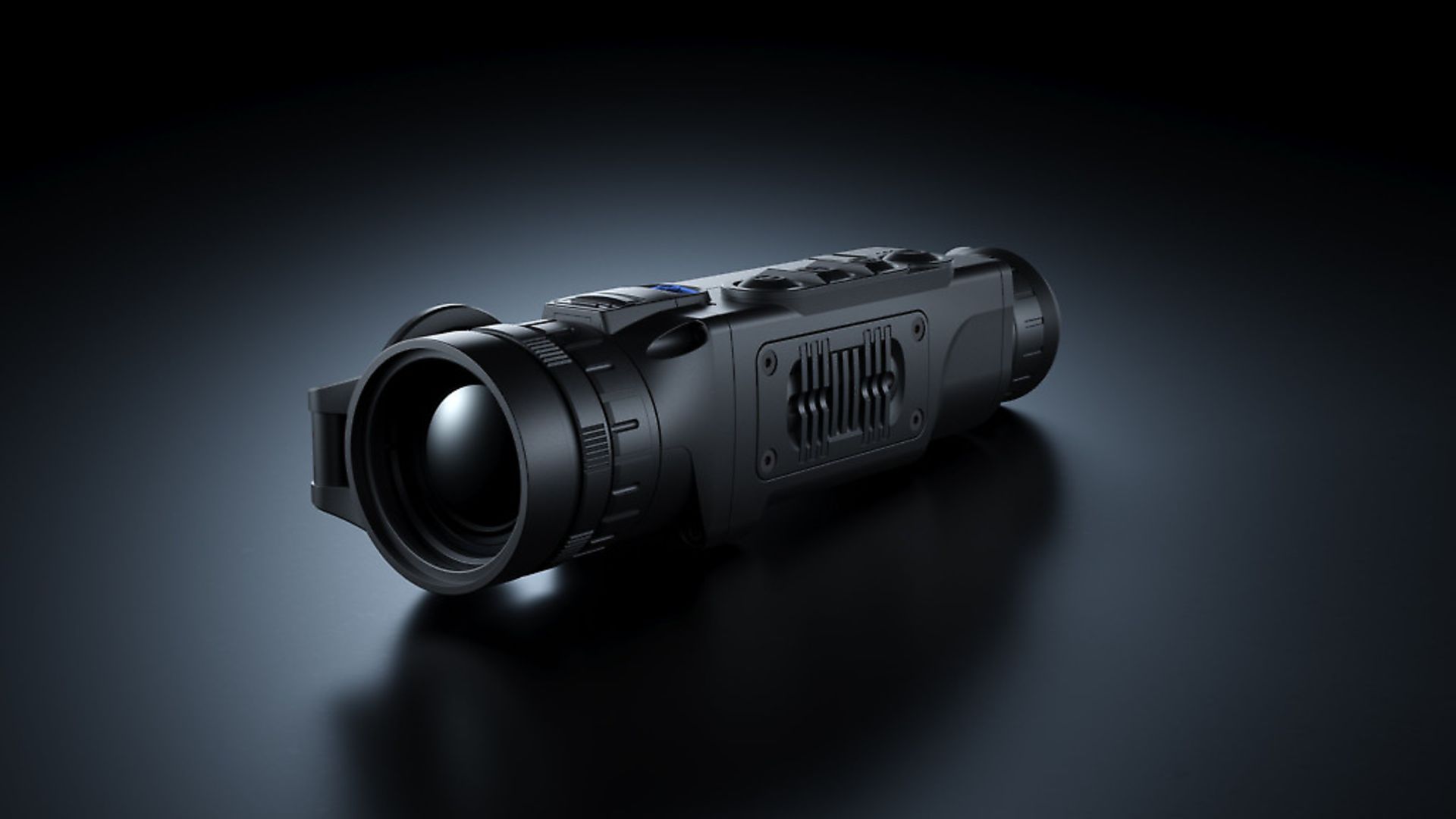
![[No caption] Accolade3](/app/uploads/sites/5/2025/01/accolade3.jpg)
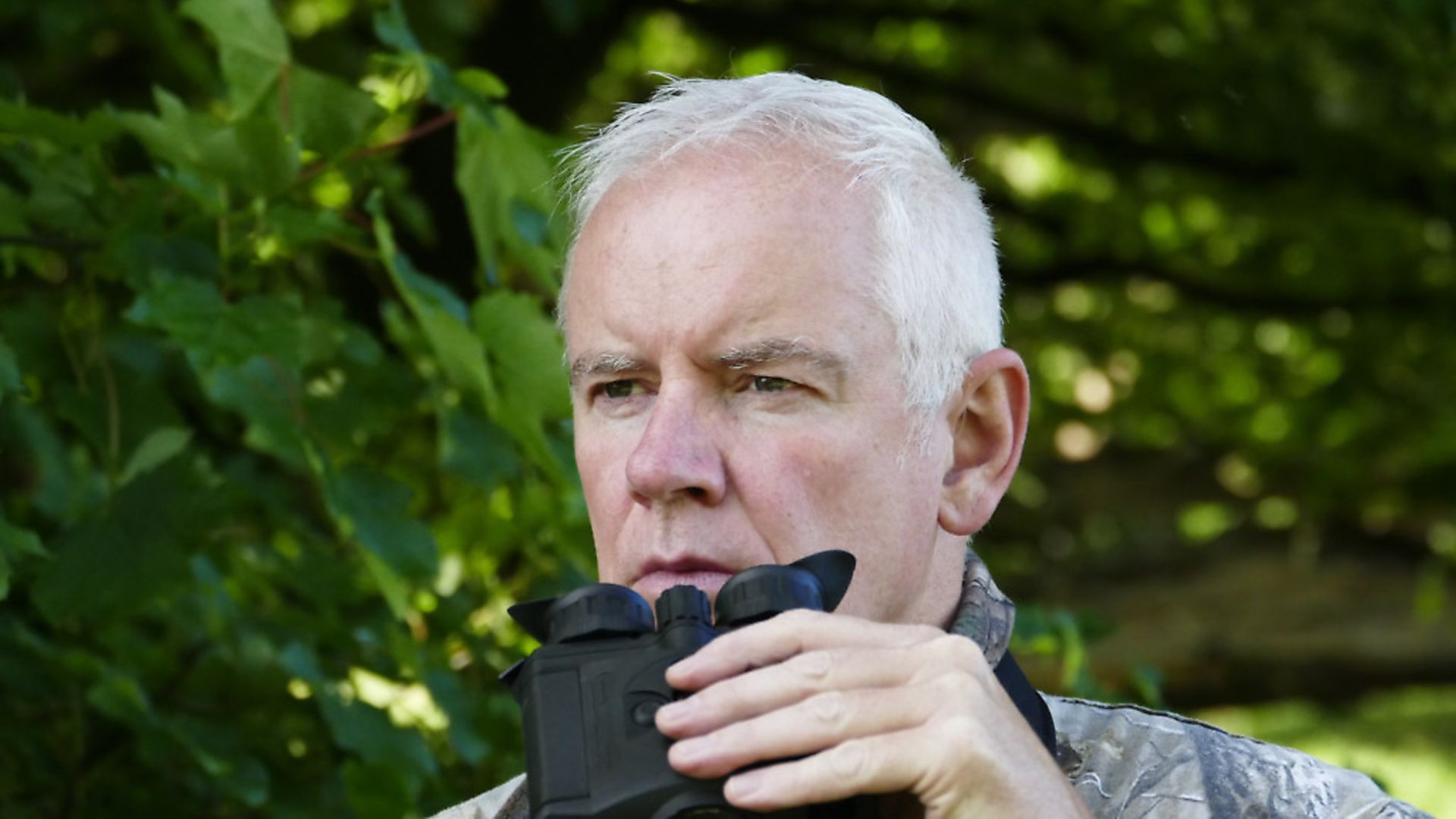
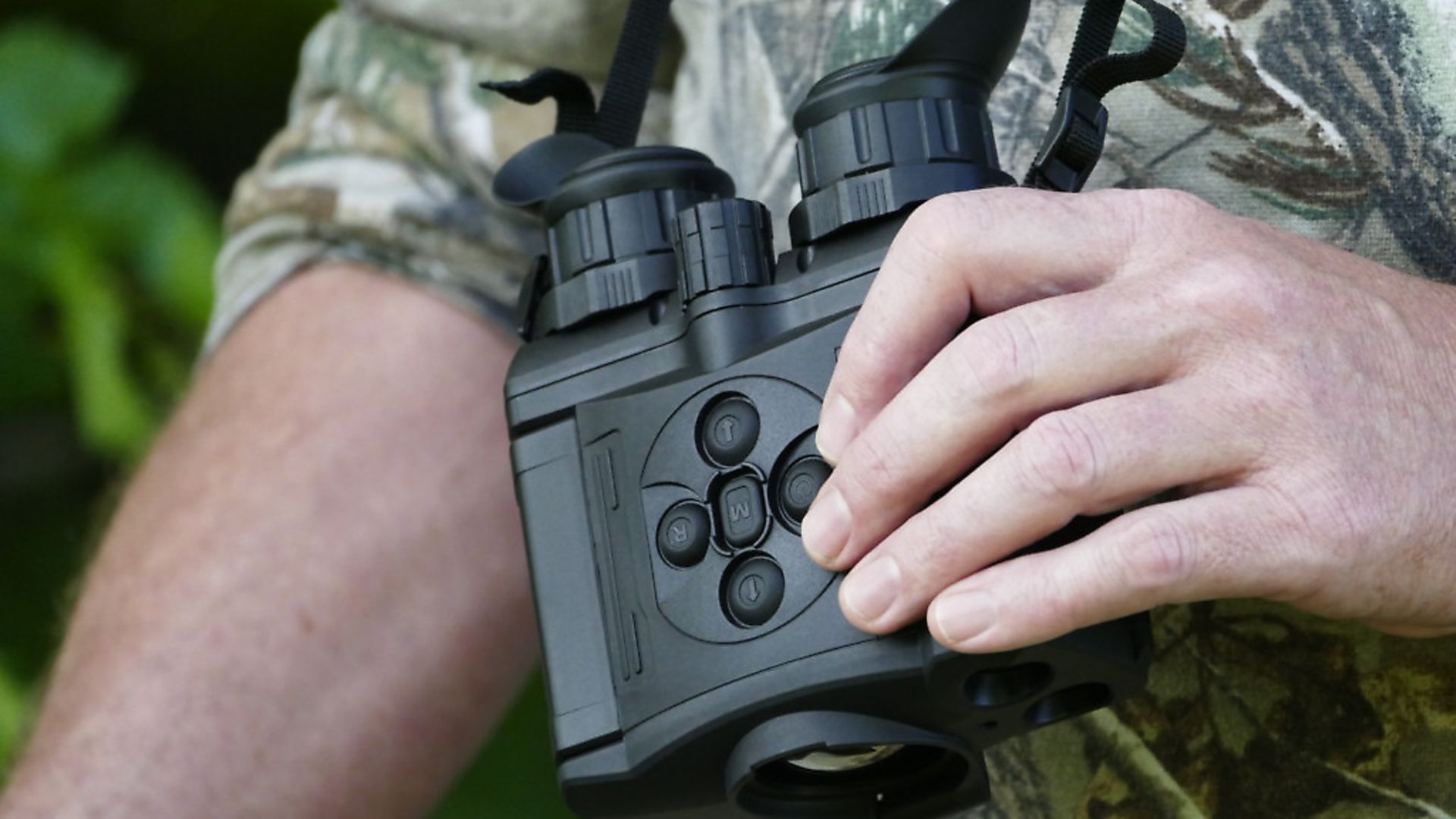
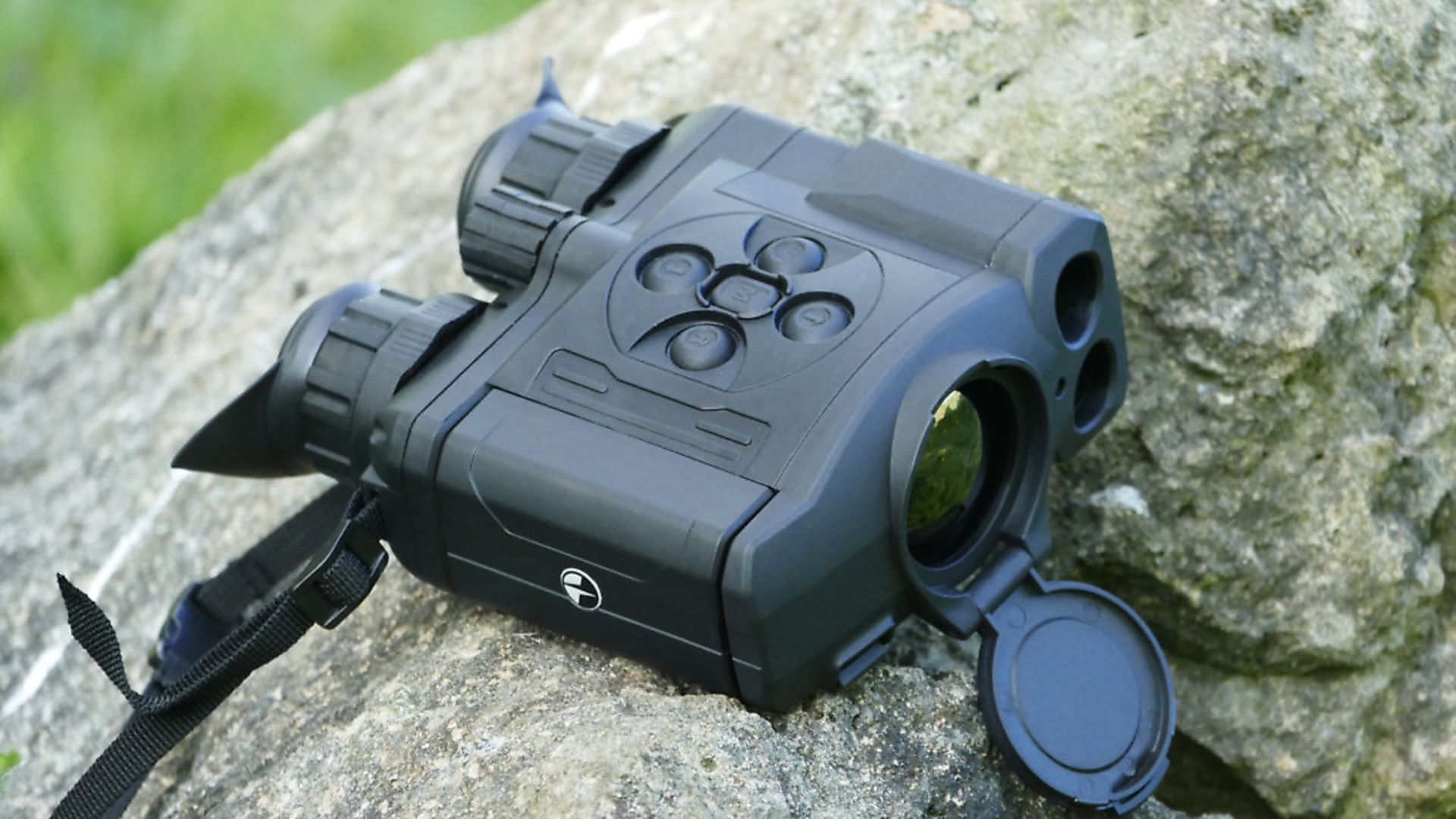
![[Alternate image for 1020846.jpg caption] 1020847](/app/uploads/sites/5/2025/01/1020847.jpg)
